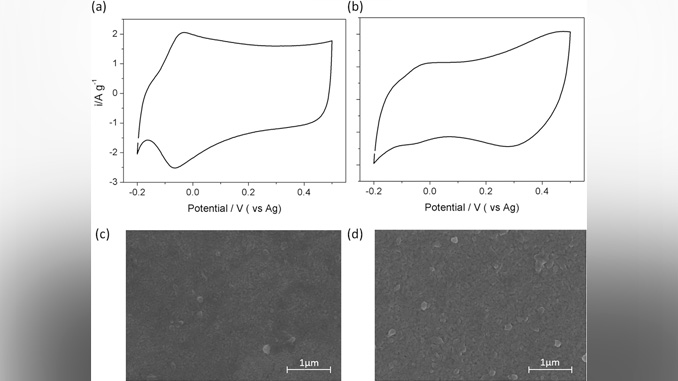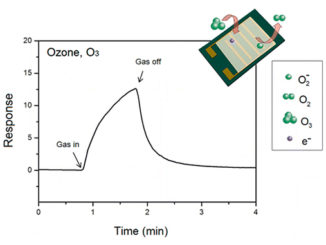
Writers: Wania Ap. Christinelli and Aline B. Trench and Ernesto C. Pereira
Keywords: Conducting polymers; Electrochromic devices; Layer-by-layer films; Self-doping
Abstract: In this work, a new material was developed to be used as the active electrode in an electrochromic device based on layer-by-layer poly(o-methoxyaniline) and poly(3-thiopheneacetic acid) films. Its properties were compared to a poly(o-methoxyaniline) film prepared by casting with similar electrochemical properties. The film preparation technique, layer-by-layer, guarantees molecular interaction between layers. In this case, the interaction leads to a self-doping effect, inhibiting the ion transport from the solution to the polymer which is the rate limiting step during the device operation. The results show both a decrease in the time constant for color change as well as a strong increase in the coloration efficiency, from 144.7 to 542 cm2 C−1 for POMA casting and LBL films, respectively.




